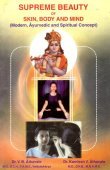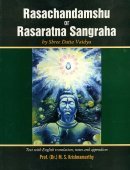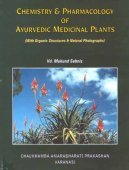Tridosha, Tridoṣa, Tri-dosha: 14 definitions
Introduction:
Tridosha means something in Hinduism, Sanskrit, Marathi. If you want to know the exact meaning, history, etymology or English translation of this term then check out the descriptions on this page. Add your comment or reference to a book if you want to contribute to this summary article.
The Sanskrit term Tridoṣa can be transliterated into English as Tridosa or Tridosha, using the IAST transliteration scheme (?).
In Hinduism
Yoga (school of philosophy)
Source: Centre for Yoga Studies: Āyurveda & Yoga – The Pañca BhūtaThe concept of Tridoṣa or the three energetic principles that underpin and activate the more physical aspects of the five elements (pañcha-bhūta). Earth, water, fire, air and ether, the five basic elements, are the physical manifestations in the body of three energetic principles of Air, Fire and Water. Collectively these three principles are known as Tridoṣa.

Yoga is originally considered a branch of Hindu philosophy (astika), but both ancient and modern Yoga combine the physical, mental and spiritual. Yoga teaches various physical techniques also known as āsanas (postures), used for various purposes (eg., meditation, contemplation, relaxation).
Ayurveda (science of life)
Veterinary Medicine (The study and treatment of Animals)
Source: Asian Agri-History: Paśu Āyurvēda (Veterinary Medicine) in GaruḍapurāṇaTridoṣa (त्रिदोष) refers to the “three humors”, according to sections on the treatment of Horses (Gajāyurveda or Aśvāyurveda) in the Garuḍapurāṇa.—[Treatment of bādhirya (deafness) and tridoṣajanya-roga (diseases manifested by three humors)]—In the management of bādhirya (deafness) and the afflictions or in diseases of tridoṣa origin, guggulu is to be administered along with grāsa (mouthfuls) of grass, etc.
Unclassified Ayurveda definitions
Source: Google Books: Essentials of AyurvedaTridoṣa (त्रिदोष, “three vital humours”).—Though the Pañcamahābhūtas prepare the frame (of the body), they cannot as such take up the functions of life. For this, as soon as life enters into the body three vital principles (tridoṣa) emerge which regulate and control the biological functions. They are known as vāta, pitta and śleṣman (kapha). In fact, they are the subtle forms of the three bhūtas—vāyu, agni (tejas) and pṛthivi—while the former bhūta (ākāśa) is too subtle and the latter bhūta (pṛthivi) too gross to be involved in the above functions.
Suśruta says that as Soma (the Moon), Sūrya (the Sun) and Vāyu (air) hold the cosmos by their functions of Visarga (releasing), Ādāna (receiving) and Vikṣepa (dissemination) so does Tridoṣa (the three doṣas)—kapha, pitta and vāta in the living body.
See Suśruta-saṃhitā Sūtrasthāna 21.8:
“The vital humours (Vayu, Pitta and Kapha) maintain the integrity of the animated organism by creating, assimilating and diffusing strength in the same way as the moon, the sun, and the winds maintain the integrity of the terrestrial globe.”
“The moon laves the earth and imparts to it the vitalising principle with her own ambrosial light. The sun draws off the moisture in virtue of his own attractive force, and the Vayu distributes the heat and moisture over its surface.”
Wherever there is life, tridoṣas are there (Caraka-saṃhitā Sūtrasthāna 18.48) and as such every living cell is pervaded by them in order to perform their functions. The dead body and the other inanimate objects have none of them. It proves that tridoṣas are invariably connected with life (prāṇa).
Source: Cogprints: Concepts of Human Physiology in AyurvedaTheory of ‘Tridoṣa’ is another important theory of physiology . This represents the various reciprocally functioning homeostatic mechanisms at various levels of organization. The state of equilibrium among these ‘Doṣas’ is responsible for maintenance of health. Three ‘Doṣas’ – i.e., ‘Vāta’, ‘Pitta’ and ‘Kapha’ in general, represent neural, endocrine and immune mechanisms respectively and form the basis of neuro‐immuno‐endocrinology.
Source: National Mission for Manuscripts: Traditional Medicine System in IndiaTridoṣa (त्रिदोष) refers to the three basic units of the “body” (śarīra).—The basic units of śarīra (“body”) are comprised of three elements known as tridoṣas. They are vāta, pitta and kapha. They are also pañcabhautic. Vātakadoṣa is ākāśa and vāyu-bhūta predominant, pitta is agni and jala predominant and kapha is jala and pṛthvī predominant. So treating with pañcabhautika drugs is a necessity to passify the rogāvasthā of a person. [...] The treatment principle of Āyurveda is addition to the body with same properties as that of doṣas and dhātus when they are of decreased level in the body. Deletion of the defected doṣas and dhātus with opposite properties when they are of excess in body.

Āyurveda (आयुर्वेद, ayurveda) is a branch of Indian science dealing with medicine, herbalism, taxology, anatomy, surgery, alchemy and related topics. Traditional practice of Āyurveda in ancient India dates back to at least the first millenium BC. Literature is commonly written in Sanskrit using various poetic metres.
Languages of India and abroad
Marathi-English dictionary
Source: DDSA: The Molesworth Marathi and English Dictionarytridōṣa (त्रिदोष).—m pl (S) The three humors of the body, kapha, pitta, vāta. 2 m or tridōṣavāyu or tridōṣavikāra &c. Disorder of the three humors; vitiation of the bile, blood, and phlegm.
Source: DDSA: The Aryabhusan school dictionary, Marathi-Englishtridōṣa (त्रिदोष).—m pl The three humours of the body; kapha, pitta, vāta. disorder of the three humours.
Marathi is an Indo-European language having over 70 million native speakers people in (predominantly) Maharashtra India. Marathi, like many other Indo-Aryan languages, evolved from early forms of Prakrit, which itself is a subset of Sanskrit, one of the most ancient languages of the world.
Sanskrit dictionary
Source: DDSA: The practical Sanskrit-English dictionaryTridoṣa (त्रिदोष).—vitiation or derangement of the three humours of the body, i. e. वात, पित्त (vāta, pitta) and कफ (kapha).
Derivable forms: tridoṣam (त्रिदोषम्).
Tridoṣa is a Sanskrit compound consisting of the terms tri and doṣa (दोष).
Source: Cologne Digital Sanskrit Dictionaries: Shabda-Sagara Sanskrit-English DictionaryTridoṣa (त्रिदोष).—n.
(-ṣaṃ) Disorder of the three humours of the body, vitiation of the bile, blood, and phlegm. E. tri three, and dīṣa a fault.
Source: Cologne Digital Sanskrit Dictionaries: Monier-Williams Sanskrit-English Dictionary1) Tridoṣa (त्रिदोष):—[=tri-doṣa] [from tri] in [compound], disorder of the 3 humours of the body
2) [v.s. ...] mfn. causing the T°, [Suśruta i, 45, 10, 11 and 46, 4, 28]
Source: Cologne Digital Sanskrit Dictionaries: Yates Sanskrit-English DictionaryTridoṣa (त्रिदोष):—[tri-doṣa] (ṣaṃ) 1. n. Disorder of the three humours of the body.
[Sanskrit to German]
Sanskrit, also spelled संस्कृतम् (saṃskṛtam), is an ancient language of India commonly seen as the grandmother of the Indo-European language family (even English!). Closely allied with Prakrit and Pali, Sanskrit is more exhaustive in both grammar and terms and has the most extensive collection of literature in the world, greatly surpassing its sister-languages Greek and Latin.
Kannada-English dictionary
Source: Alar: Kannada-English corpusTridōṣa (ತ್ರಿದೋಷ):—
1) [noun] (collectively) various sins committed by the body, speech and mind.
2) [noun] any disorder caused by the three humours (phlegm, wind and bile) of the body.
Kannada is a Dravidian language (as opposed to the Indo-European language family) mainly spoken in the southwestern region of India.
See also (Relevant definitions)
Starts with: Tridoshadavanala, Tridoshadavanalakalamegha, Tridoshaghna, Tridoshahara, Tridoshaharin, Tridoshaja, Tridoshajanya, Tridoshajaprakarana, Tridoshakrit, Tridoshaniharasurya, Tridoshapaha, Tridoshasamnipatanirnaya, Tridoshashamana, Tridoshavadavanala, Tridoshodara.
Ends with: Matridosha, Stridosha.
Full-text (+75): Tridoshaja, Tridoshaghna, Pitta, Vata, Tridoshashamana, Tridoshakrit, Tridoshaharin, Ahitahara, Phanita, Tiritosham, Tridoshapaha, Shanihpata, Vishtambhakara, Tridoshahara, Ulbya, Upakrama, Dosha, Madhurata, Dridhata, Snigdhata.
Relevant text
Search found 17 books and stories containing Tridosha, Tridoṣa, Tridosa, Tridōṣa, Tri-dosha, Tri-doṣa, Tri-dosa, Tri-dōṣa; (plurals include: Tridoshas, Tridoṣas, Tridosas, Tridōṣas, doshas, doṣas, dosas, dōṣas). You can also click to the full overview containing English textual excerpts. Below are direct links for the most relevant articles:
The Concept of Sharira as Prameya (by Elizabeth T. Jones)
Śarīra in Āyurveda < [Chapter 5]
Jivanandana of Anandaraya Makhin (Study) (by G. D. Jayalakshmi)
Basic Principles of Āyurveda < [Chapter 4 - Āyurvedic principles in Jīvanandana Nāṭaka]
Sannipātas (fevers due to Vāta, Pitta and Kapha) < [Chapter 4 - Āyurvedic principles in Jīvanandana Nāṭaka]
Analysis of Pāṇḍu < [Chapter 6 - Dramatic aspects of the Jīvanandana Nāṭaka]
History of Indian Medicine (and Ayurveda) (by Shree Gulabkunverba Ayurvedic Society)
Chapter 13 - Conclusion < [Part 6 - The Science of the Triumvirate (Tridosha) Pathogenesis]
Chapter 1 - Background on the concept of Tridosha pathogenesis < [Part 6 - The Science of the Triumvirate (Tridosha) Pathogenesis]
Part 6 - The Science of the Triumvirate (Tridosha) Pathogenesis
Amarakoshodghatana of Kshirasvamin (study) (by A. Yamuna Devi)
Internal Anatomy < [Chapter 3 - Social Aspects]
Philosophy of Charaka-samhita (by Asokan. G)
Fundamental Theories [in Charaka philosophy] < [Chapter 3 - Fundamental Theories]
The importance of the philosophy of Carakasaṃhitā < [Chapter 1 - Introduction]
Samkhya thoughts in the Mahabharata (by Shini M.V.)
Three-fold misery (i.e., Three kinds of pain) < [Chapter 2 - The Principles of Sāṃkhya Philosophy]
Related products




